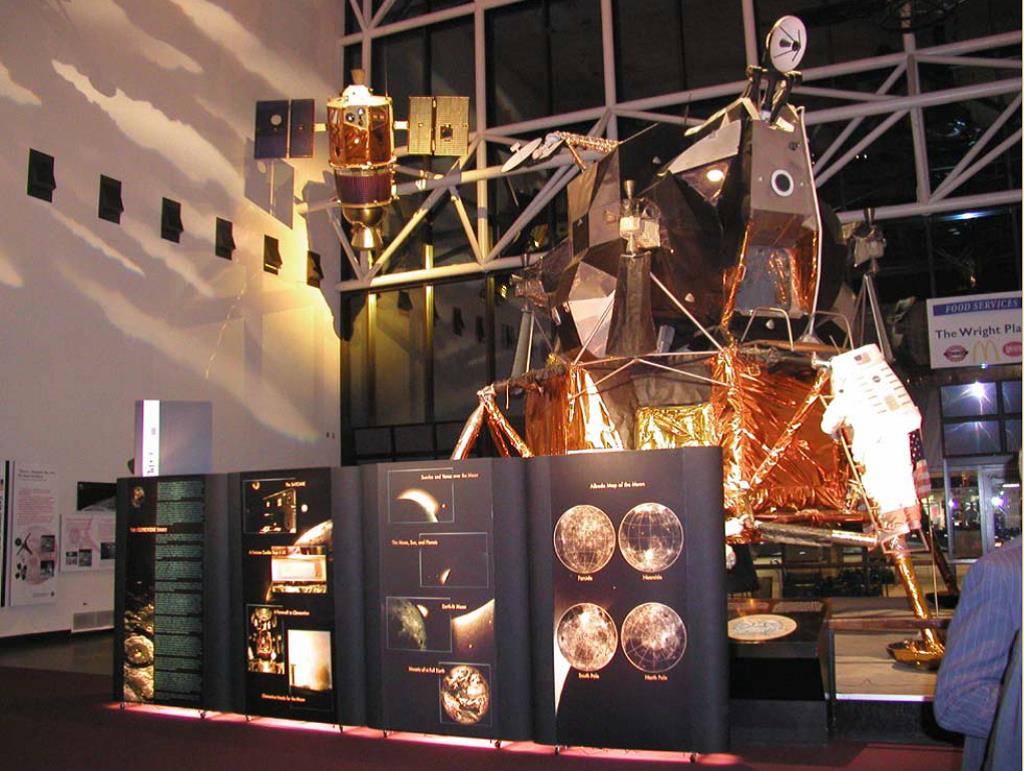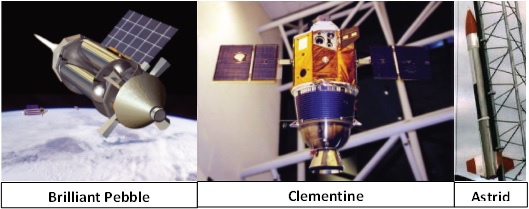Amb. Henry F. Cooper, Chairman . . . Lt. Gen. Daniel Graham, Founder
High Frontier . . Building Truly Effective Defenses . . Reagan’s Vision Lives!
E-Mail Message 130514
The Dog Not Barking
By Ambassador Henry F. Cooper
 In Sir Arthur Conan Doyle’s Silver Blaze, Sherlock Holmes solved a mystery by noticing the “watch dog did not bark” while the family slept and a crime was being committed. Just so, we may not avert a calamity if we do not in time note the dog not barking in the current search for counters to existential threats to all we hold dear.
In Sir Arthur Conan Doyle’s Silver Blaze, Sherlock Holmes solved a mystery by noticing the “watch dog did not bark” while the family slept and a crime was being committed. Just so, we may not avert a calamity if we do not in time note the dog not barking in the current search for counters to existential threats to all we hold dear.
The “dog not barking” in today’s search for the most effective defense against essentially all ballistic missiles is the development of space-based defenses. The possibilities for such a defense are evident from the following conceptual sketch, which illustrates at a conceptually accurate scale how a low altitude orbiting defensive satellite might be directed to intercept even a short range ballistic missile. Detailed computer simulations during my watch as director of the Strategic Defense Initiative (SDI) showed that such a space based defense could have shot down all of Iraq’s SCUD missiles during the 1991 Gulf War long before they reached Tel Aviv or Haifa.
 Such an intercept possibility exists because of the high velocity of any object in low earth orbit—faster than an intercontinental ballistic missile (ICBM) which reaches much higher altitudes than the defense orbit. Longer range attacking ballistic missiles than depicted above would be easy targets for such a defense, provided the defense can discriminate the attacking warhead from decoys.
Such an intercept possibility exists because of the high velocity of any object in low earth orbit—faster than an intercontinental ballistic missile (ICBM) which reaches much higher altitudes than the defense orbit. Longer range attacking ballistic missiles than depicted above would be easy targets for such a defense, provided the defense can discriminate the attacking warhead from decoys.
Thus, defeating an electromagnetic pulse (EMP) attack like those discussed in the past several messages would be easy pickings for such a defense. Attempting high altitude detonations (and to reach longer distances) would require the attacking ballistic missiles to fly through the orbiting defense interceptors, presenting multiple easy shots for the defense.
We can do this . . . so why aren’t we? The answer is a bit of a long story, but one important to understand if we are ever to employ such an effective defense. Consider a few highlights.
At the Beginning:
Understand that the basic space defense concepts have been evident for over a half century—beginning most significantly with studies sponsored by the Advanced Research Project Agency (ARPA), created in 1958 by the Eisenhower administration in the wake of Sputnik, when Russia beat us to space, to avoid another technological surprise. Avoiding technological surprise remains the key mission of ARPA’s successor agency today, now dubbed the Defense Advanced Research Project Agency (DARPA).
Between 1958 and 1965, ARPA’s Project Defender explored plausible, then-considered exotic, technologies that could possibly defend against ballistic missiles, including lasers and a kinetic hit-to-kill system called Bambi (for Ballistic Missile Boost Intercept)—designed to intercept ballistic missiles in their boost phase while their rockets still burn and before they can release decoys. This comprehensive study fleshed out the conceptual ideas of most if not all of the missile defense concepts considered by President Ronald Reagan’s Strategic Defense Initiative (SDI), in response to his March 23, 1983 speech, challenging the scientific community to develop effective defenses.
Key SDI Initiatives:
The SDI program updated the Project Defender concepts based on advancing technology, e.g., according to Moore’s Law, named after INTEL’s co-founder, the number of integrated circuit transistors doubles approximately every two years—translating to corresponding increases in the speed of computational operations for a given volume computer. By the late 1980s, this and related advances produced hand-held computers with the computational power of the CRAY-1, the fastest of the 1970s computers in large rooms to support the nation’s cutting edge scientific computing needs.
Indeed, an SDI concept called Brilliant Pebbles, developed by a Lawrence Livermore National Laboratory (LLNL) team, exploited this and other technological innovations—it was emphasized as the most promising of the SDI concepts by Lieutenant General James Abrahamson, the first SDI Director, in his 1989 End of Tour report. It became the first SDI program to enter a Pentagon formally-approved Demonstration and Validation (DemVal) phase under SDI’s second director, Lieutenant General George Monahan. “Brilliant Pebbles” proceeded on my watch as the third SDI director, with two industrial teams (led by Martin Marietta and TRW-Hughes) competing for further development beyond the DemVal stage. Both teams were making excellent progress—but their efforts were not to last beyond my watch.
Toward the end of my watch, key congressional leaders, particularly in the U.S. Senate, made clear they intended to kill this program—I agreed with my predecessors’ assessment that it was SDI’s most important innovation, then funded at several hundred million dollars a year (in 1990 dollars).
As a hedge strategy, I began the Clementine Program to space qualify key technologies in a mission that was “politically correct”—to return to the Moon for the first time in 25-years and map its entire surface, demonstrating the inherent capabilities of the Brilliant Pebbles sensor suite. This mission succeeded beyond my fondest hopes—and a replica now hangs in an honored location in the Smithsonian next to the Lunar Lander, as illustrated in the photo below (upper left).
One might rightly wonder what Clementine had to do with a space-based interceptor, which looks entirely different, as depicted in the left hand photo below. In short, the Clementine spacecraft (center) carried sensors, each of which involved one of 13 spectral bands, identified during 1989 critical reviews of the Brilliant Pebbles concept as being needed to respond effectively to all the offensive countermeasures to avoid an intercept. These requirements were defined by many of the nation’s smartest scientists, including a number of outspoken SDI critics. In designing the $80 million Clementine mission, the Naval Research Laboratory, which was the spacecraft integrator, used sensors scavenged from the LLNL Brilliant Pebbles laboratory testing program that had indicated this outcome was possible during the critical reviews—needed was a proof of that conclusion.
The Clementine mission lifted off less than 2 years after my go-ahead decision in 1992—it returned to the Moon for the first time in 25 years and mapped its entire surface in the 13 spectral bands—obtaining more such data than the entire Apollo program and identifying water in the polar regions of the Moon—confirmed by subsequent NASA missions. Several issues of Science, the prestigious journal of the National Academy of Sciences, were dedicated to publishing the Clementine data, and the small Clementine team, led by Air Force Colonel Pete Rustan who regrettably passed away last year, received awards from the National Academy and NASA for Clementine’s scientific achievements and its demonstration of the “Faster, Better, Cheaper” approach sought by NASA Administrator Dan Goldin. Dr. Goldin previously had led TRW’s Brilliant Pebbles team and also well understood the importance of the demonstration for missile defense applications as well as its scientific achievement.
Thus, the main scientific elements of a given Brilliant Pebbles spacecraft were demonstrated in the acid test environment of space in 1994—including the Brilliant Pebbles software which was exploited to manage the Clementine mission. In effect, Clementine space-qualified all Brilliant Pebbles advanced technology except for the light-weight miniature propulsion system; and that capability was also demonstrated on an Astrid flight test later in 1994—see the right hand photo in the above figure.
Confidence in remaining key system elements was provided by, perhaps, an unlikely source—the private sector. This evidence assures the possibility of the required mass production of a large number of satellites and a cost-effective on-orbit space-station-keeping management system to support them. That a cost-effective concept of operations for a full constellation of Brilliant Pebbles is possible was demonstrated in the 1990s by a Motorola-led consortium that developed, deployed and operated the Iridium world-wide telecommunication system illustrated below.
The Iridium team built and launched an initial constellation of 95 mid-sized (800 kg each—over 10 times more mass than the anticipated 50 kg Brilliant Pebble) spacecraft between May 1997 and November 1998, at a peak build-rate of 4 spacecraft-per-week; employing 19 launchers from a wide variety of American and foreign space-launch service-suppliers. Spacecraft quality was operationally demonstrated to be exceptionally high—only 2 of the launched 95 failed in the first half-dozen years of operation, an in-service mortality rate unrivalled in mass-produced spacecraft of all types and origins. The Iridium constellation provided world-wide coverage for communications via handheld cellphones and pagers.
It is a challenge to get the U.S. government to accomplish what was done in the private sector, with its profit motive. But the Motorala team’s policies and prcedures should be emulated by the powers that be.
As the above discussion strongly suggests, the technology was available twenty years ago to build this most effective missile defense, yet nothing—repeat, nothing—has been done to exploit that technology while the Pentagon has invested in a number of missile defense systems many times what was needed to develop and deploy such a global defensive system to protect the American people and our overseas troops, allies and friends. And that system would have been far more effective today than what we have in providing the needed defenses—and would have cost far less than what we have invested—story for another day.
How Did Things Run Amok?
It became apparent to me during the summer of 1992 that congressional Democrats, particularly in the Senate, intended to kill the Brilliant Pebbles program—which led me to initiate, with NASA cooperation and support, the very successful Clementine program. Clementine follow-on programs were strongly desired by the scientific community, but blocked by President Clinton—because, as a senior official told the press, it employed SDI technology. Defense Secretary Les Aspin killed the Brilliant Pebbles remnant and disbursed the knowledgeable technologists—as he said, “taking the stars out of Star Wars.”
So, why did this happen? And why is nothing being done about it today? The short answer is that it’s not a matter of technology or money—it’s all about deeply entrenched ideology as briefly discussed below—more for another time. And these circumstances are not likely to change without key senior leadership—or a disaster that captures the attention of the American people who in turn demand that their leaders build truly effective defenses.
To illustrate how deeply entrenched these issues are, consider Bill Broad’s October 28, 1986 New York Times article, which also referred to the early Project Defender/Bambi history and a number of the key political issues of that time, about three years after Ronald Reagan initiated SDI and a little over two weeks after the October 11-12 Reykjavik Summit when President Reagan walked out because Soviet General Secretary Mikhail Gorbachev demanded that testing of space based defenses be restricted to the laboratory. Broad’s article, which did not mention Reykjavik, reflected the heat of the then wide-spread debate over the wisdom of the SDI and the commitment of the arms control community to the ABM Treaty, while I was defending SDI in our negotiations with the Soviet Union.
It is not exaggerating to claim that without Ronald Reagan’s strong belief that our search for effective defenses, including space defenses, was not to be traded away—SDI would have died in the cradle, perhaps in Reykjavik. This was before Brilliant Pebbles became a gleam in the eye of even General Abrahamson—then the SDI Director. Indeed, it came as a consequence of LLNL initiatives, primarily in the 1987-88 period—and the consequences were so profound that General Abrahamson initiated a crash technology assessment program and his successor, General Monahan, chartered a separate Task Force to manage the Brilliant Pebbles Concept Demonstration and Validation program that went public in 1988.
This coming-out no doubt prompted President Reagan’s veto of the 1989 Defense Authorization Act because it cut funding for space based interceptors. President Reagan’s correct judgment left powerful enemies in congress who eventually (after my watch) were successful in killing the program—and their servants in subsequent administrations have not taken any steps to revive it. So it remains dormant today, even though President George W. Bush withdrew from the ABM Treaty, which had dulled serious thinking about the most effective defenses for 30 years—except for the SDI era during 1984-93.
See my 2001 Wall Street Journal article, written when I was hopeful that President Bush would revive the Brilliant Pebbles program—after he signaled his intent to withdraw from the Treaty. Alas, he did not, and we remain hostage to Cold War ideology though not the legal limits of a Treaty written to underwrite that ideology. For an unabridged discussion of these important issues and more specifics on Brilliant Pebbles, see our 2009 Independent Working Group report.
I fear that the Obama administration and its arms control advocates will be treating us to various “executive agreements,” if not formal treaties that will again bind the hands and thinking of our scientific and engineering community—preventing us from building the most effective defenses for America and our overseas troops, friends and allies.
More about this concern another day. For now, remember “the dog not barking!” At least, you have been warned!
And what can you do?
As is always important, better inform yourself on these important issues, and help us get the message to the grass roots that truly effective space-based ballistic missile defenses are feasible and quite affordable.
Join us at High Frontier in seeking to alert the public to the existential threats posed by both manmade and natural electromagnetic pulse (EMP) events—and what can be done about them. Note that Bill Broad’s article mentioned above also referenced the 1962 Starfish Nuclear test that alerted us to EMP by damaging now 50-year old electronics in Hawaii—imagine what it would do today!
We can use your help in spreading the word to grass roots and local authorities to press the powers that be to provide for the common defense as they are sworn to do. Will you do your part?
Begin by passing this message to your friends and suggest they visit our webpage, www.highfrontier.org for more information. Also, please encourage your sphere of influence to sign up for our weekly e-newsletter!
Please click here to read Past Weekly Udpates!
Please click here to read past Flash Messages!
Please help High Frontier continue this important and timely work!
Be sure to follow us on our Social Sites!
If you found this letter via our Social Sites, and you would like to subscribe, click below!






